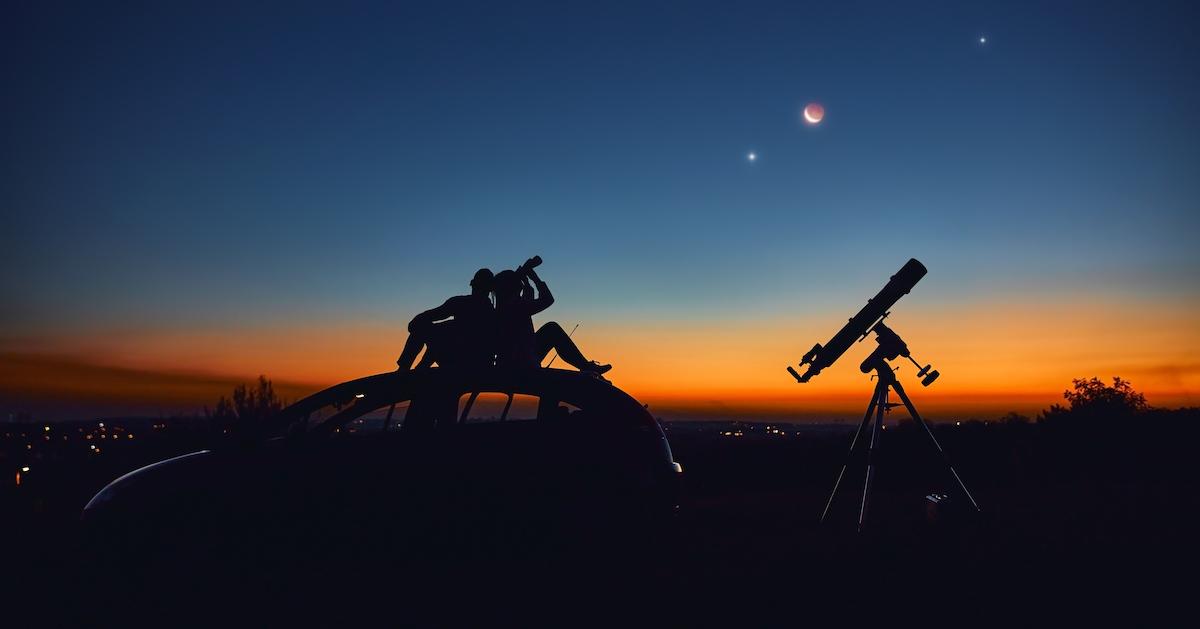Will 6 Planets Really Be Visible in Parade of Planets? Exaggerated Reports Will Lead to Disappointment
Don't get too excited.
Updated May 30 2024, 10:11 a.m. ET

Looking up in the sky and seeing just one planet in the distance can feel pretty magical — so imagine glancing upwards and seeing six of them! That's technically what will occur in early June 2024 when a parade of planets emerges over the night sky.
A planetary parade is a pretty extraordinary thing — but the upcoming parade won't be as simple as glancing upwards and seeing six planets illuminating the night sky. In fact, if you're expecting to see something incredible, you may be disappointed. Keep reading for all the details on the June 2024 parade of planets, as well as the misinformation surrounding it.

What is the parade of planets?
The parade of planets simply refers to a night in which multiple planets are visible in the night sky all in one night, according to TIME.
This phenomenon is also know as the planetary parade or planetary alignment, the latter of which may more specifically refer to when a few planets appear in line, all on the same side of the sun.
When is the next parade of planets in 2024? Six planets will be visible.
The next planetary parade will be visible on June 3, 2024. Mercury, Mars, Jupiter, Saturn, Uranus, and Neptune will comprise this parade of planets, which will technically be visible in the northern hemisphere. However, you shouldn't expect amazing views, or to see them all at once.
How to see the parade of planets on June, 3 2024:
According to many news outlets, northern hemisphere residents will have amazing views of the planetary alignment. However, Forbes reports that many of these reports are grossly exaggerated, based on an article by the astronomy app Star Walk, which implies that all six planets will be seen at once.
As reported by Forbes, Star Walk "bases the information on what can be seen on its app, not in the actual sky. The trouble is, there’s something it fails to make clear: you’ll only actually see two planets — and neither of them will be particularly bright or impressive."
Forbes notes that Mars and Saturn are the only two planets that may technically be visible to the naked eye, but views will be faint. Neptune and Uranus will potentially be visible as well, though you'll need a large telescope to see them. And Mercury and Jupiter will likely be obscured by the sun — so although they'll technically be "visible," they really won't be.
So if you'd like to see these planets, don't get too excited.
Check out these planet identification apps:
If you're worried about being able to identify the planets as part of the parade, there are a number of planet identification apps that can help.
Star Walk has a free app called Sky Tonight, which uses your phone's camera to map out the night sky, and identify various planets, stars, and constellations. It includes a calendar of (and reminders for) upcoming astronomical events, a guide to what tools are needed to view that night's events, and more. That said, remember that the planets won't be as visible as Star Walk implies.
The free app Night Sky claims to be the most popular stargazing app on iOS. Just point your phone at the sky, and the app will use your camera to find and identify various celestial objects. The app integrates weather reports so you can figure out the best local time for stargazing, it sends notifications for upcoming planetary events, and more.
There's also the app SkyView, which will cost you $2.99 — though there's also a free lite version. The app works similarly to the above ones, using your phone or iPad's camera to find planets and more in the sky. It can also be connected to your Apple Watch, used to set reminders of upcoming sky events, and jump to the sky's past or future with a time travel setting.
This article, originally published on March 23, 2023, has been updated.